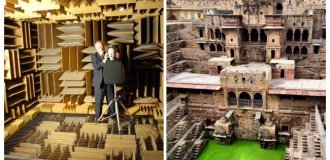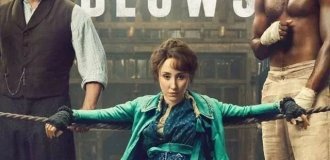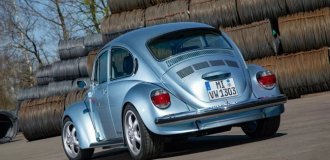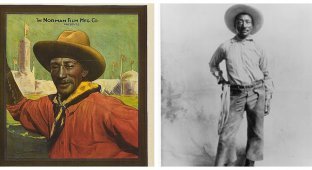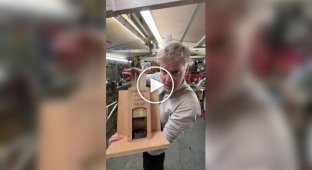A selection of interesting and unusual photos from the USA (21 photos)
These unique shots will help us immerse ourselves in the atmosphere of different eras and observe how the American lifestyle has changed over the decades. 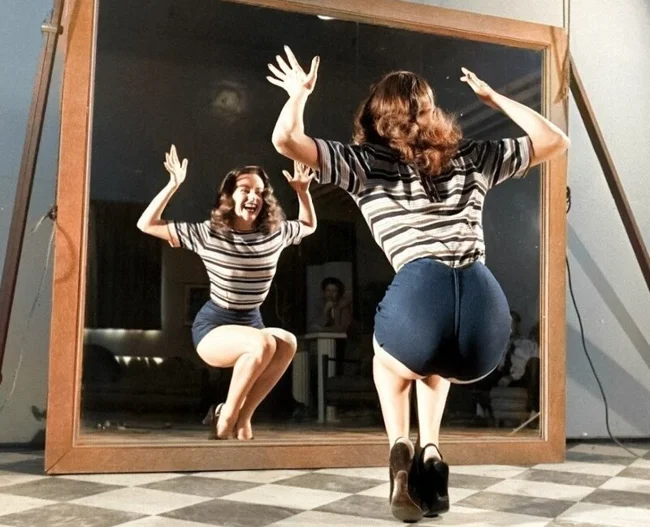
A farmer's daughter sitting on the porch. Wolf Creek Farm, Georgia, USA, 1935. 
Photographer: Arthur Rothstein
Lucille Mullhall on a ranch in Oklahoma, 1909. Born and raised on a ranch in Oklahoma, Lucille Mullhall made history as one of the pioneers among women who dared to compete with men in the art of horsemanship. She won many honorary titles, including "Rodeo Queen" and "Queen of the Western Prairie." She began her career in her father's rodeo show, the Mullhall Wild West, in 1899. Lucille not only competed in various rodeo shows, but also created her own in 1916. For her outstanding achievements, she was inducted into the National Cowboy & Western Heritage Museum, the Rodeo Hall of Fame, and the National Cowgirl Museum and Hall of Fame, cementing her status as a legend of the American West. 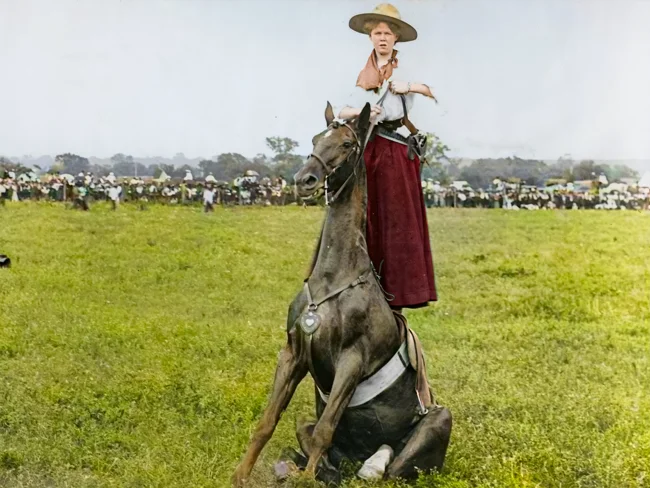
A charity attraction in 1982. The event was aimed at raising funds for families affected by the massive "temporary" layoffs in the American auto industry. Spectators paid $1 for each hit to a car, which helped draw public attention to the pressing social issues of the period. In the 1970s and early 1980s, the American auto industry faced a crisis due to the growing popularity of Japanese cars. Their success was explained by their affordable price, economy, reliability and high build quality, which was especially appreciated in the context of the energy crisis and rising fuel prices. At the same time, American manufacturers focused on producing powerful but gas-guzzling cars were vulnerable. The crisis led to mass layoffs of workers, protests (including the symbolic destruction of Japanese cars) and demands to limit imports. In 1981, the United States and Japan agreed on quotas for the export of Japanese cars. American companies were forced to reconsider their strategy: they began to produce more economical models and cooperate with Japanese brands, which began to open factories in the United States. This crisis became a lesson for the American industry, emphasizing the importance of adapting to market changes and consumer demands. 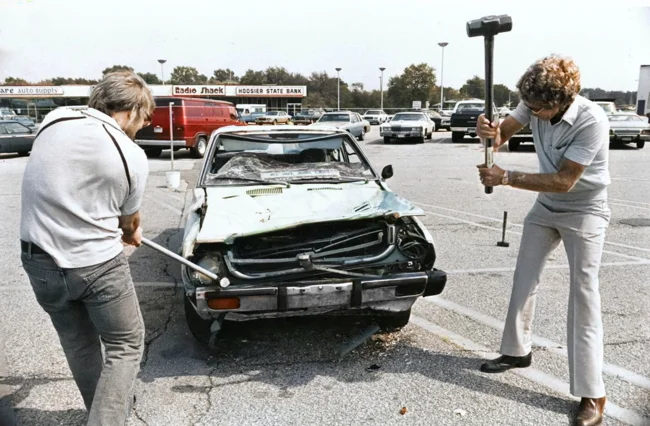
"Along the Chesapeake and Ohio Canal." Washington, D.C., environs, circa 1915. 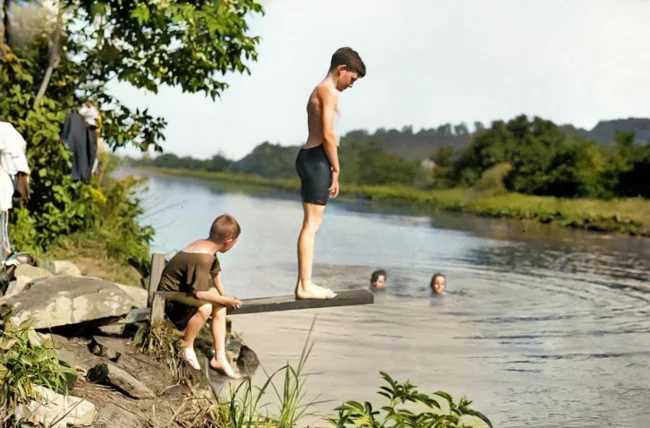
John Walter Christie demonstrating the new Christie M1928 tank on Capitol Hill. Washington, 1929. The Christie M1928 tank was displayed in Washington to demonstrate its innovative capabilities. The main goal was to convince the US Army and foreign customers of the effectiveness of a vehicle capable of reaching speeds of up to 45 mph (72 km/h) on wheels and switching between tracks and wheels. Despite the impressive speed and maneuverability, the US military rejected the project due to its high cost and technical complexity. However, the demonstration attracted the attention of other countries, especially the USSR, where the design formed the basis for the BT and T-34 series of tanks. 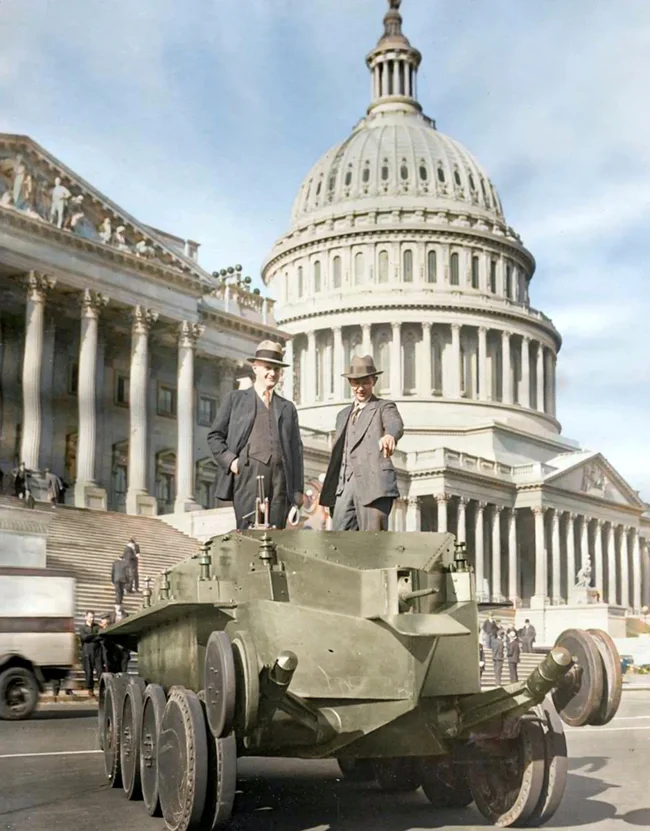
A ward of Walter Reed Hospital, 1918. A photograph of Walter Reed Hospital in Washington, D.C., during the 1918–1919 influenza pandemic, known as the Spanish flu. The photograph shows rows of beds set up on an open terrace, with patients separated from each other by sheets suspended between them. 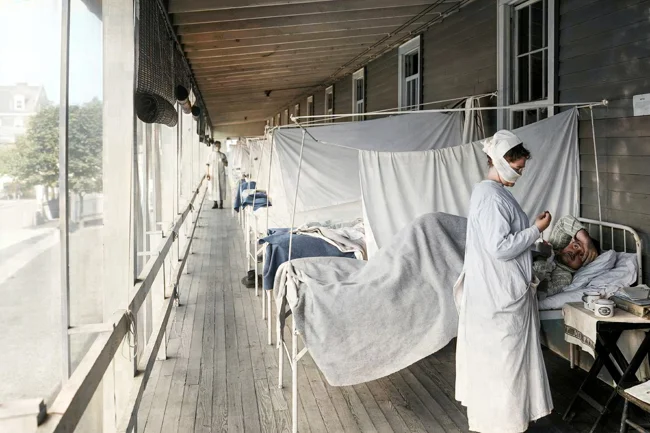
A couple embraces in a convertible overlooking Los Angeles. California, Hollywood. USA, 1951. 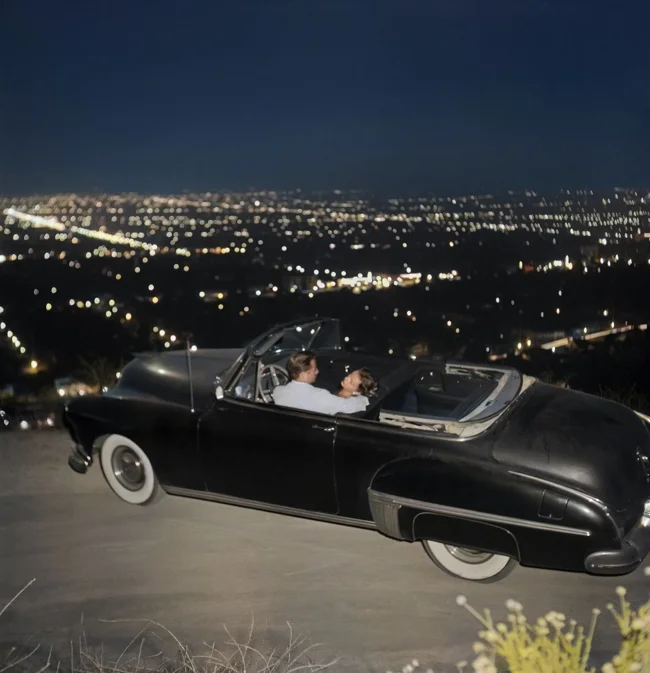
"Fashion Sweaters." USA, 1983. Fashion forecasters have dubbed 1983 "the year of the sweater," and designers have responded with creations featuring animal prints and spots, ruffles and pearls, as well as checks and diamonds. 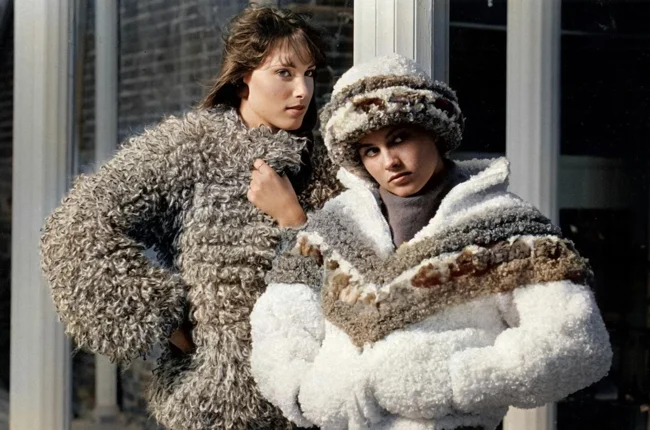
American dancer Betty Dierenger rehearsing in front of a mirror, 1947. 
Two boys repairing a loom or fixing broken threads. Georgia, USA, 1909. Many families lived in poverty, especially in rural or working class areas. The income of one parent (usually the father) was not enough to support the family, so children were forced to work to help make ends meet. Children often worked in factories, mines, farms, or as paperboys, apprentices, and helpers. 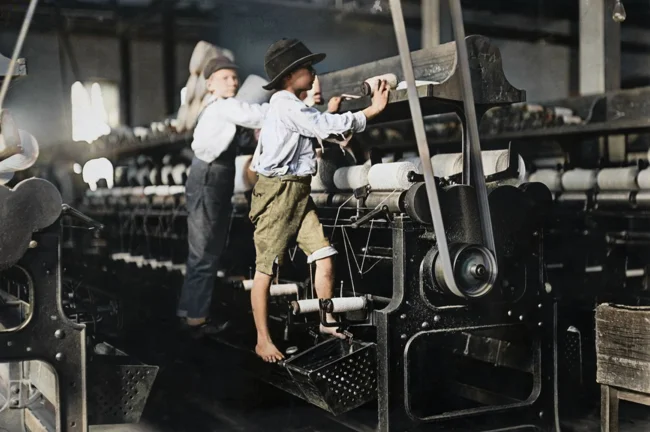
Portrait of an Inuit woman with her child. Alaska, USA, 1947. 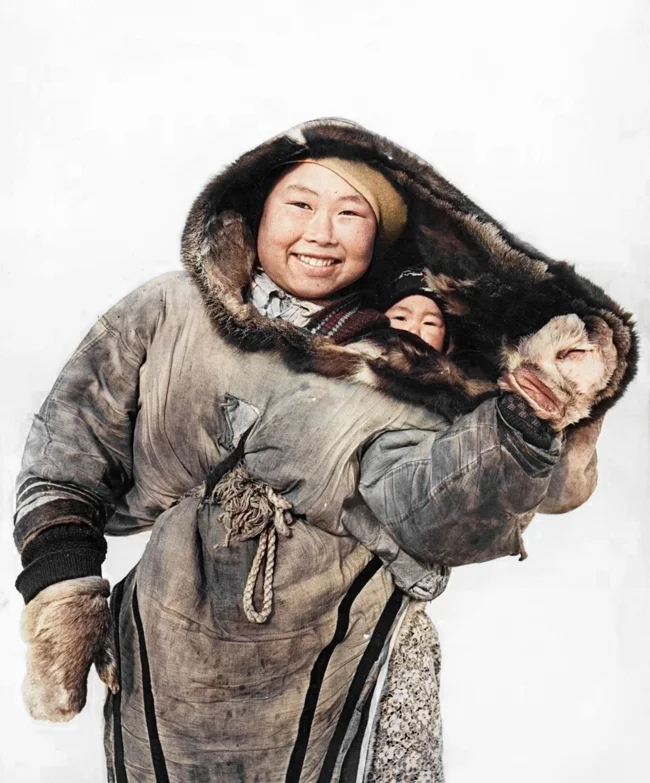
Underground "alcohol factory". USA, 1930s. A striking example of how the illegal alcohol production and sale industry flourished in the USA during the "Prohibition" (1920-1933). Despite the ban, alcohol consumption remained popular. Many citizens did not want to give up drinking, which created a huge market for illegal production. The production and sale of alcohol became extremely profitable. Underground factories could operate with minimal costs, and alcohol was sold at inflated prices through illegal channels. 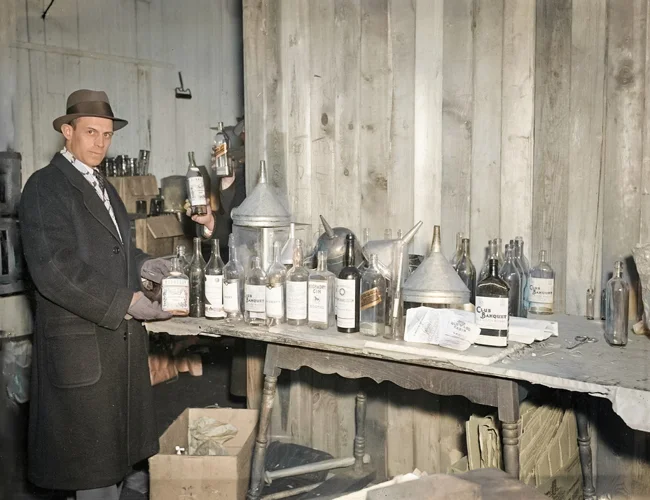
At the Trade Center. Washington, 1961. 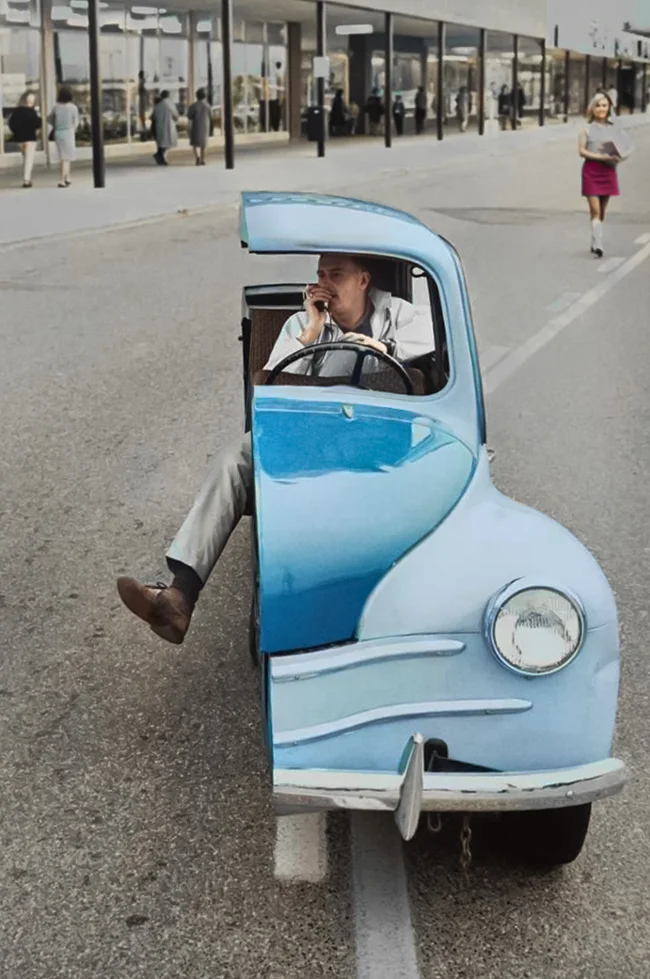
Photographer: Burke Uzle
A view of a street in Chinatown. New York, USA, 1930s. 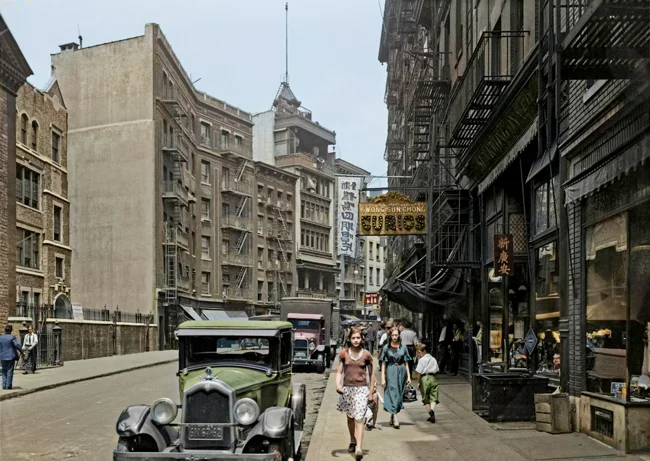
Lady in the Water. Florida, 1947. 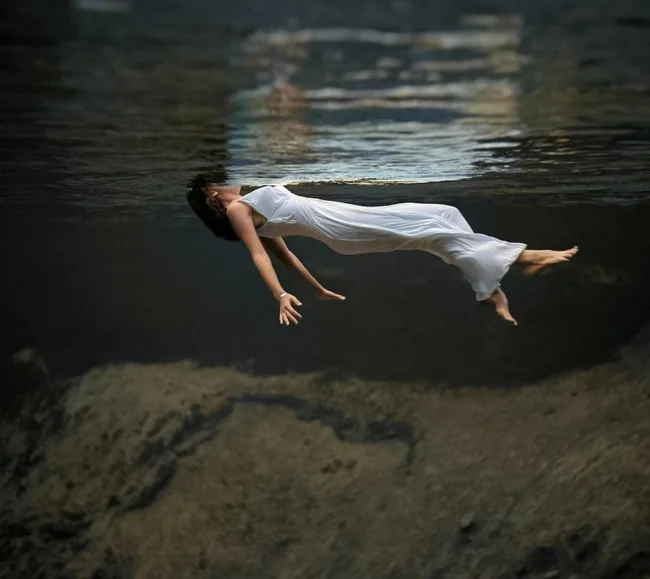
Carol Morris – Miss Universe 1956. Crowned Miss Universe 1956, Carol Morris was one of the most notable winners of this prestigious beauty pageant. Representing the United States, she won the title at the age of 20, becoming the second American to receive this honor after Miriam Stevenson’s success in 1954. Carol Morris was born in Iowa and grew up in a small town. Before participating in Miss Universe, she had already won the national Miss USA 1956 pageant, which allowed her to represent her country internationally. 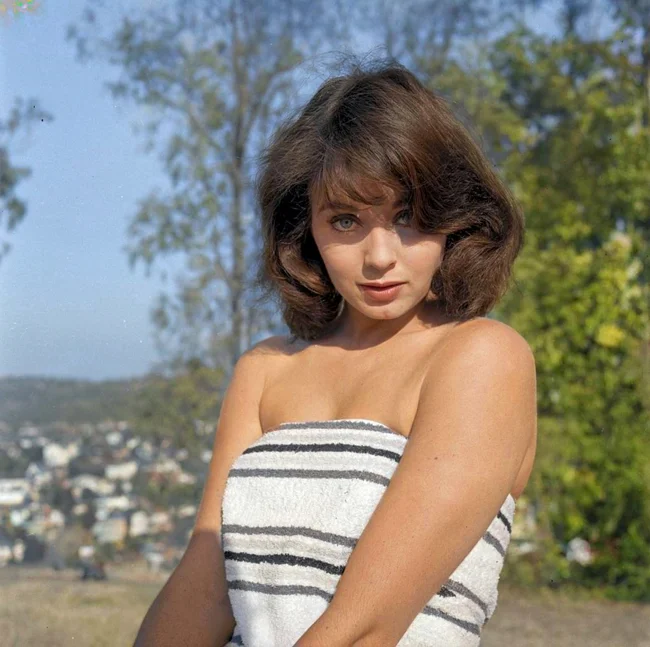
Brooklyn Bridge and horse-drawn carriages. USA, 1918. 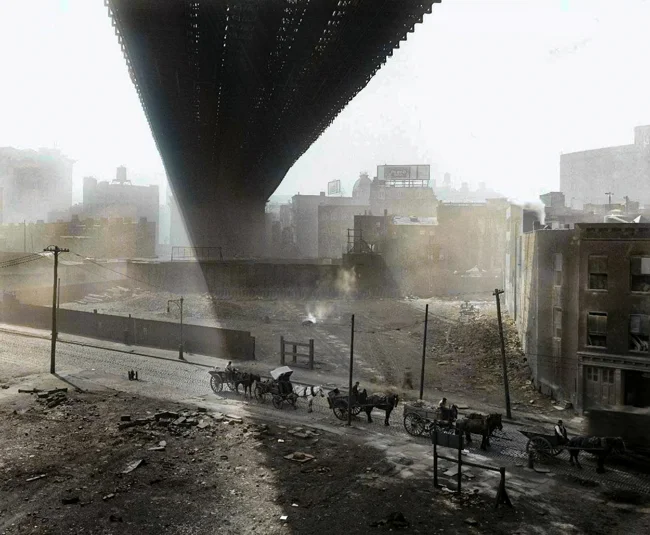
A young paperboy sleeps on the job. USA, 1912. 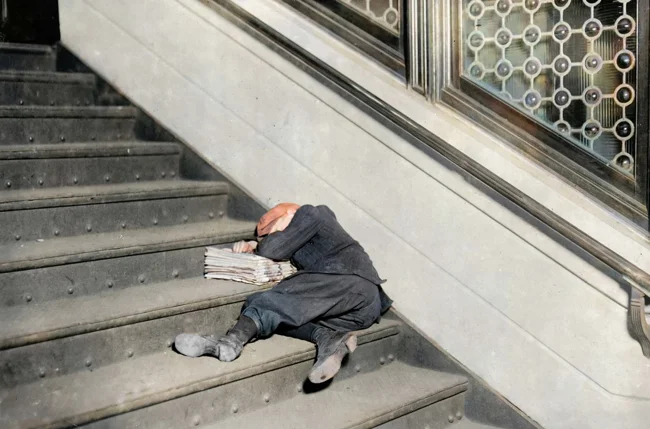
A young family, penniless, hitchhikes on US 99, California. In early 1935, the twenty-four-year-old father and seventeen-year-old mother arrived in California from Winston-Salem, North Carolina. Their child was born in the Imperial Valley, where the couple earned their living as field laborers. 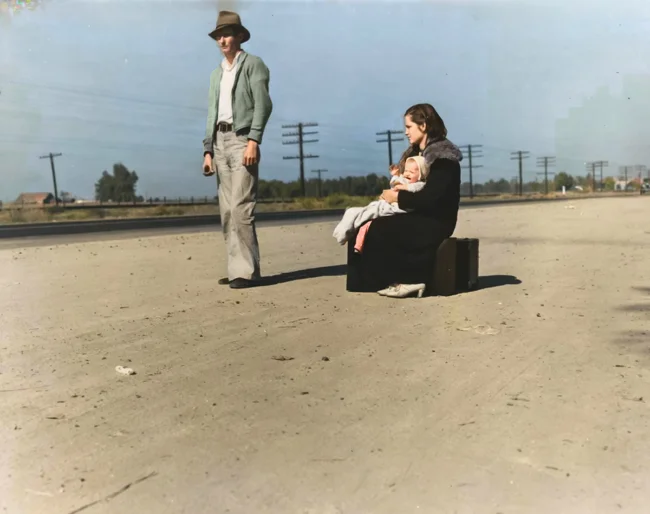
Photographer: Dorothea Lange.
Central Park Reservoir. USA, 1954. 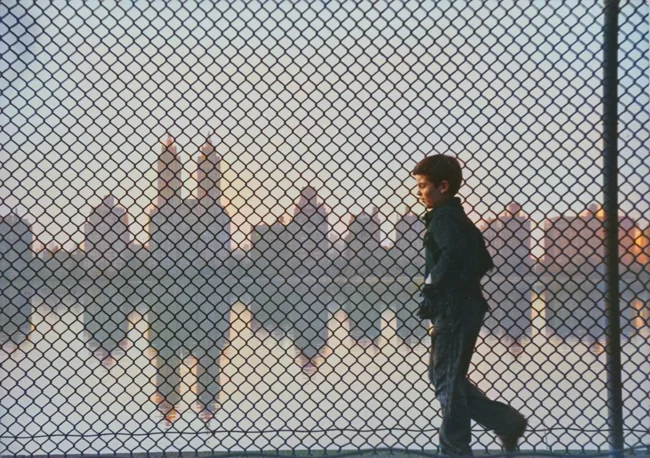
Photographer: Ruth Orkin


